Cadillac, one of the oldest car manufacturers, was founded in 1902 and became part of General Motors in 1909.
Since then, Cadillac has served as GM’s luxury division, producing exceptional models that became icons, not only for their design and innovative features but also for their popularity with celebrities, including the legendary King of Rock ‘n’ Roll.
However, Cadillac’s appeal isn’t limited to luxury alone. Throughout its history, almost all Cadillacs have been equipped with powerful V-8 engines, and in some cases, even V-16 engines, delivering immense power.
While these engines are typically engineered for low-end torque rather than top-end speed, Cadillac has consistently excelled in performance as well.
This tradition of performance is especially evident in the brand’s more modern models, which often share components with GM’s flagship sports car, the Chevrolet Corvette.
While certain Cadillac models may not have lived up to their full potential, they still marked important milestones in the brand’s evolution. Without further delay, here are the best Cadillacs ever built.
We have compiled data from automobile catalogs and Cadillac’s official website to present the best of both Cadillac’s past and present models.
1930 Cadillac V-16
One of the standout models is the 1930 Cadillac V-16. While Cadillac is most famous for its big V-8 engines, the brand’s engineers began experimenting with more unconventional engine configurations as early as 1930, notably with the creation of the V-16 by merging two V-8 engines.
Cadillac’s V-16 was a luxury car, available as both a roadster and fixed-head body style. The Cadillac V-16 was part of the brand’s commitment to luxury, and it is considered a remarkable feat in automotive history.
Despite being introduced just one year after the Wall Street crash of 1929, the V-16 exceeded sales expectations, with 4,076 units built.
Many of these vehicles, such as the 1937 V-16 Hartman Cabriolet based on the Series 452, were equipped with bespoke bodies.
The 1930-1940 Cadillac V-16 had a 7.1 and 7.4-liter OHV V-8 engine, a 3-speed manual transmission, and a rear-wheel-drive drivetrain. It delivered 165 horsepower and 271 lb-ft of torque, with a 0-60 mph time of 24 seconds.
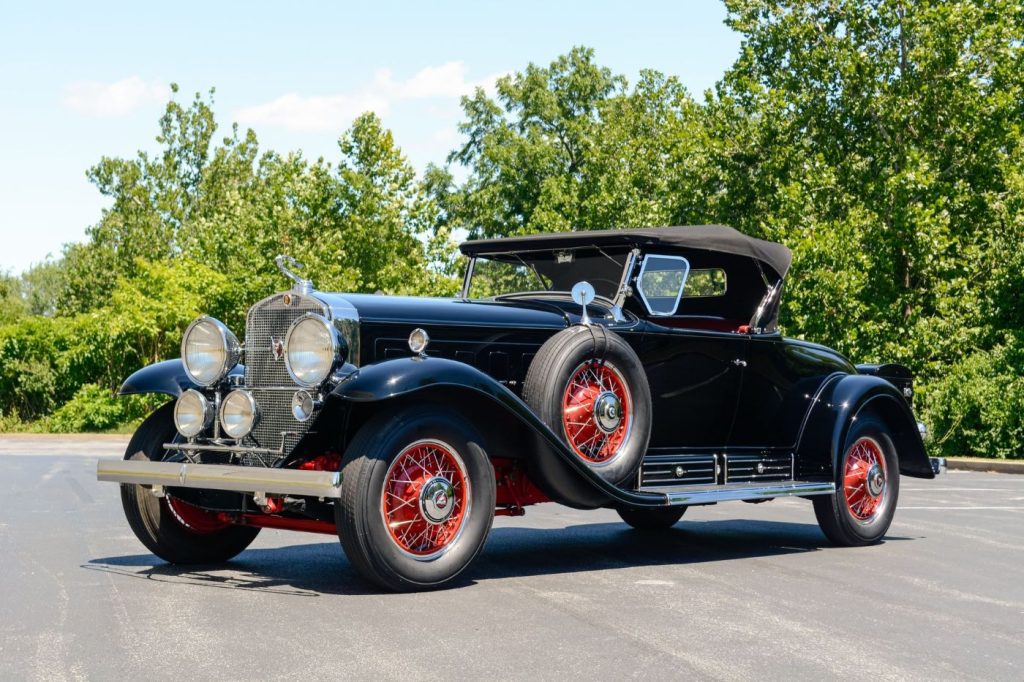
1977 Cadillac Fleetwood Brougham
Another iconic model is the 1977 Cadillac Fleetwood Brougham. The Cadillac Brougham name was used on a variety of Cadillac Eldorado models to signify a higher level of luxury compared to the more standard variants.
As a smog-era vehicle, the Fleetwood Brougham was equipped with a smaller 425 cubic-inch V-8 engine, which was a de-stroked version of the previous 472 and 500 cubic-inch V-8 engines.
Despite a significant reduction in power due to smog equipment and less aggressive camshafts, the Brougham excelled in mid-range torque, ensuring a smooth and powerful ride.
The 1977 model became a popular choice in underground circles, with a trunk large enough to fit four “unfortunate” individuals who hadn’t paid their debts on time.
Although it was shorter and narrower than previous full-size Cadillacs, it remained imposing enough to be immortalized in films. The 1977 Cadillac Fleetwood Brougham had a 7.0-liter OHV V-8 engine, a 3-speed automatic transmission, and a rear-wheel-drive drivetrain.
It delivered between 180 and 195 horsepower, with 320 lb-ft of torque and a 0-60 mph time between 11.6 and 12 seconds.
The Cadillac Series 62 represents a whole family of flagship models produced by Cadillac from 1940 to 1964. However, it was the sixth generation (1959-1960) that made the most significant impact.
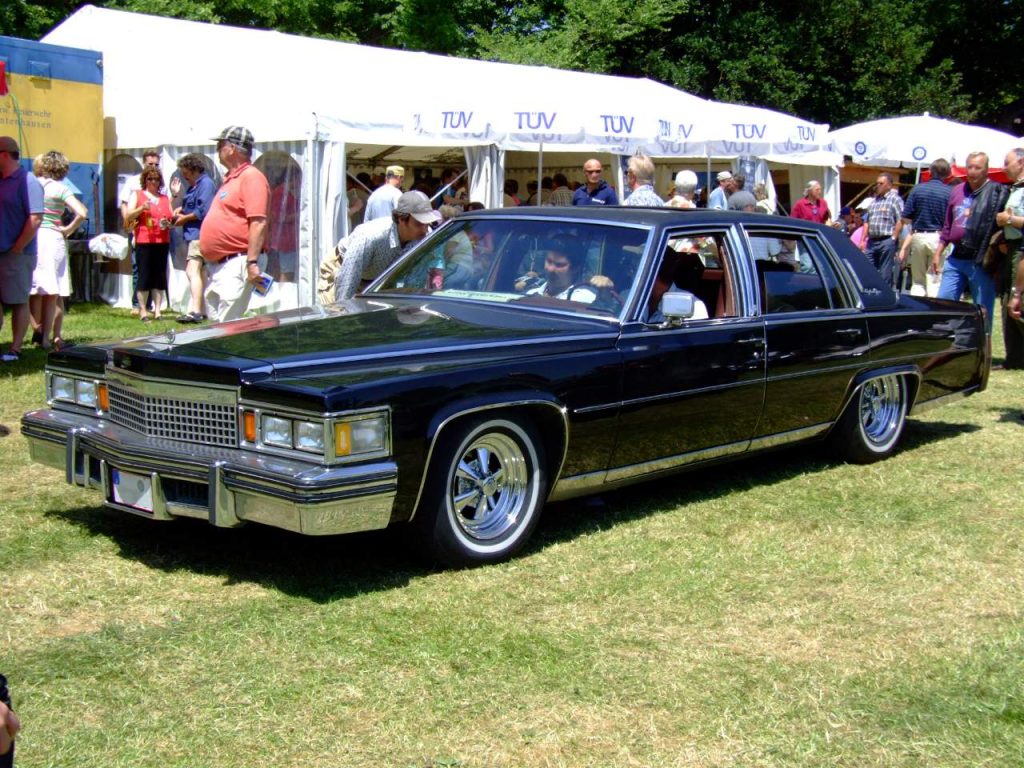
Also Read: 15 New & Classic Muscle Cars That Remain Popular Among Enthusiasts
1959 Cadillac Series 62
While Elvis Presley’s pink Cadillac Fleetwood 60 caught a lot of attention, it was the 1959 Series 62 model that truly revolutionized the era. Known for its striking design, the 1959 Cadillac featured enormous tail fins and dual-bullet taillights.
During that time, car designers drew heavy inspiration from the aeronautical industry, and the 1959 Caddy Series 62 clearly reflected this influence. Classic Cadillacs are often associated with luxury and excess, and the 1959 Series 62 exemplified that.
Measuring an imposing 225 inches, it became an icon of opulence and extravagance, drawing attention from high-profile figures such as Marilyn Monroe, Al Capone, Elvis Presley, and even President Franklin D. Roosevelt.
The 1959 Cadillac Series 62 was equipped with a 6.4-liter OHV V-8 engine, offering a power output ranging from 304 to 345 horsepower and torque between 404 to 435 lb-ft. It could accelerate from 0 to 60 mph in a time between 11.2 and 9.9 seconds, depending on the configuration.
The car was available with either a 3-speed automatic or a 4-speed manual transmission, and it featured rear-wheel drive. Its design and performance made it one of the most iconic luxury cars of its time, embodying Cadillac’s commitment to craftsmanship and elegance.
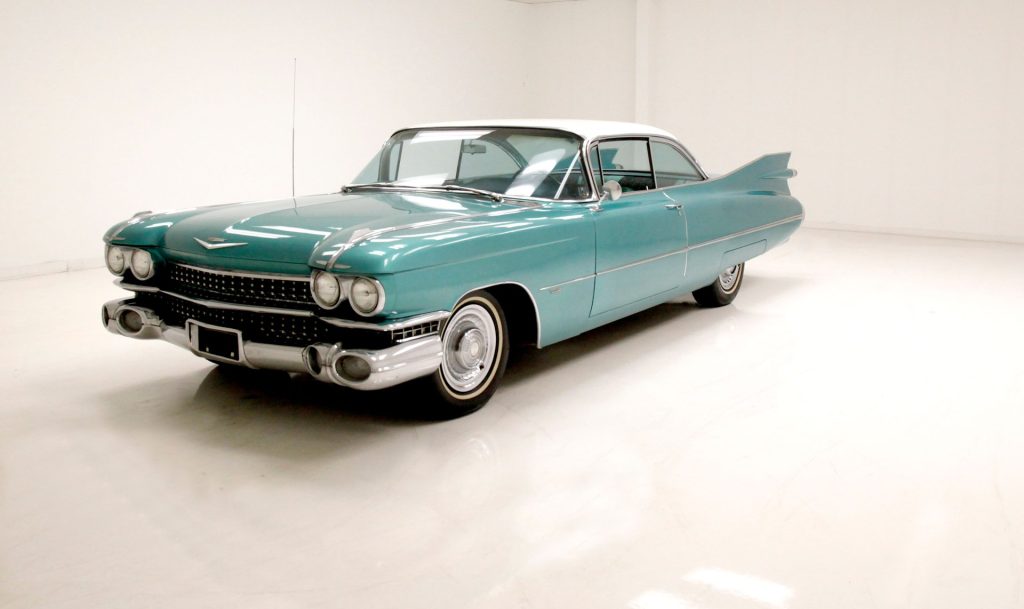
1965 Cadillac DeVille/ Eldorado
Moving to the 1960s, the Cadillac DeVille and Eldorado were symbols of American luxury during an era dominated by muscle cars.
While American muscle cars garnered the most attention for their power and performance on racetracks and drag strips, luxury cars like the Cadillac DeVille and Eldorado still had their place in the automotive market.
The 1965 Cadillac DeVille and Eldorado were the peak of 1960s luxury, with the Eldorado serving as the top-tier model in the range. The 1965 models were powered by a 7.7-liter OHV V-8 engine, which produced 375 horsepower and 525 lb-ft of torque.
This powertrain allowed the car to go from 0 to 60 mph in just 7.9 seconds. The DeVille and Eldorado both featured a 7.0-liter V-8, though the DeVille received a larger 472 V-8 starting in 1968.
For the time, these Cadillacs included impressive technology such as automatic dimming headlights, which were a groundbreaking feature. Additionally, in 1967, the Eldorado nearly received a V-12 engine, showcasing Cadillac’s ambition to push the boundaries of automotive engineering.
The 1965 DeVille marked the beginning of a shift away from the bold, extravagant designs of previous years.
While the tail fins were less pronounced and the chrome detailing was toned down, there was still plenty of chrome to be found. The 1965 DeVille and Eldorado were luxurious, powerful, and advanced for their time, cementing their place in Cadillac’s legacy of excellence.
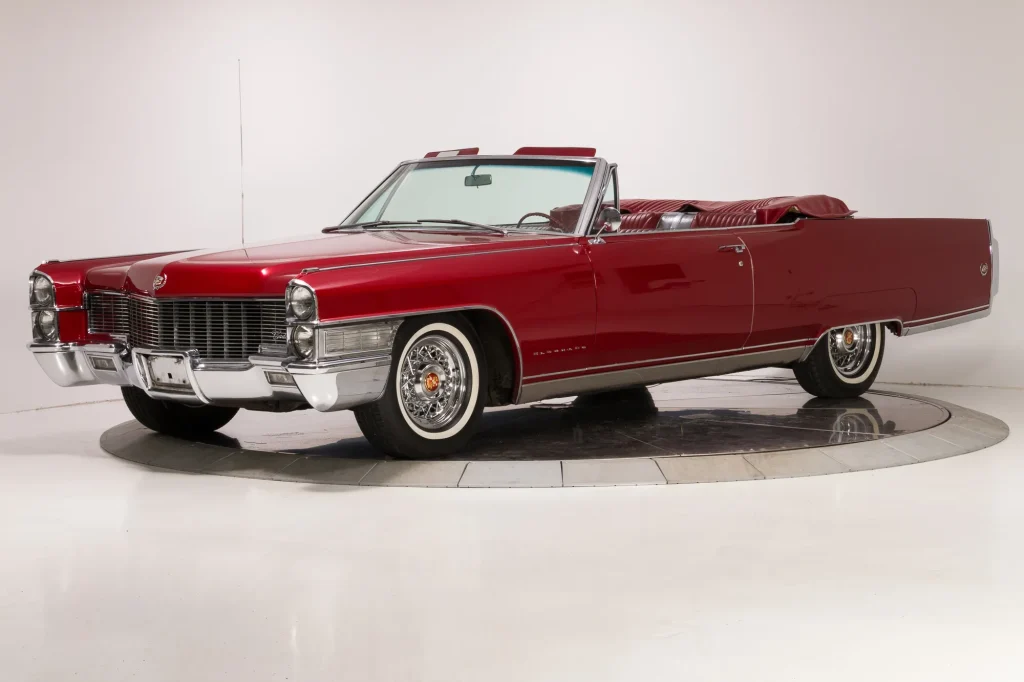
1998 Cadillac Seville
After the 1970s, Cadillac’s full-size luxury models underwent a significant shift in design. The bold chrome bumpers and large tail fins that once defined the brand made way for a more refined and understated design language.
However, Cadillac remained synonymous with luxury, and in 1998, the company made an ambitious move by positioning its Seville luxury sedan against the likes of the BMW 5 Series and the Mercedes E-Class.
This move, however, was doomed from the start because the Seville was built on the GM G-platform, which was designed for a transverse engine and front-wheel drive, a setup that was not ideal for competing in the same arena as the German competitors.
The 1998 to 2004 Cadillac Seville was more of an “old man’s luxury sedan” than a true sports-luxury contender. Despite this, it eventually gained appreciation after its production ended, largely thanks to its powerful Northstar V-8 engine.
Over the course of its production, a total of 171,130 fifth-generation Sevilles were sold. These vehicles have withstood the test of time, with Kelley Blue Book awarding them a reliability rating of 4.4 out of 5.
The Seville was powered by a 4.6-liter DOHC V-8 engine that produced 300 horsepower and 299 lb-ft of torque. With a 4-speed automatic transmission and front-wheel drive, it could accelerate from 0 to 60 mph in 6.4 seconds, offering a solid performance for a luxury sedan.
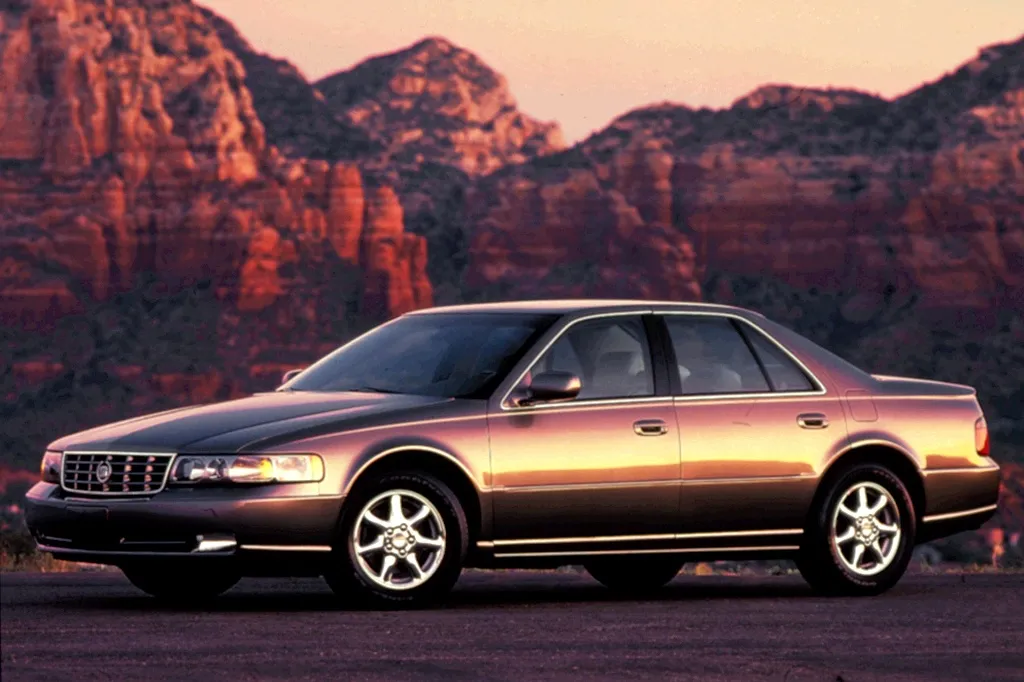
2004 Cadillac XLR-V
The Cadillac XLR-V, introduced in 2004, marked the brand’s serious foray into the realm of luxury sports cars, a category that had long seemed foreign to the American luxury automaker.
While Cadillac had previously explored the concept of a two-door luxury sports car with various rare production models and concepts, it was not until 2003 that the brand produced a mass-market sports car with the introduction of the Cadillac XLR.
The XLR-V, which debuted in 2004, was the high-performance version of this vehicle, offering a significant performance upgrade over the regular XLR. The XLR-V was equipped with a 4.4-liter supercharged DOHC V-8 engine that delivered 443 horsepower and 414 lb-ft of torque.
It was paired with a 6-speed automatic transmission and rear-wheel drive, allowing it to reach 0 to 60 mph in just 4.6 seconds.
Like the regular XLR, the XLR-V shared the Y-Body platform with the Chevrolet Corvette, but it stood out by offering a much more luxurious interior featuring premium leather and wood accents.
While the XLR-V’s engine was smaller than the Northstar V-8 used in the standard model, it was supercharged for added performance.
Despite its impressive features, the XLR-V was somewhat overlooked, primarily due to its departure from the traditional performance expectations associated with Cadillac, and the fact that many enthusiasts had hoped for a more powerful LS6 V-8 engine.
Nevertheless, the XLR-V remains a standout example of Cadillac’s attempt to create a luxury sports car, blending performance with elegance in a way that was unexpected from the brand.
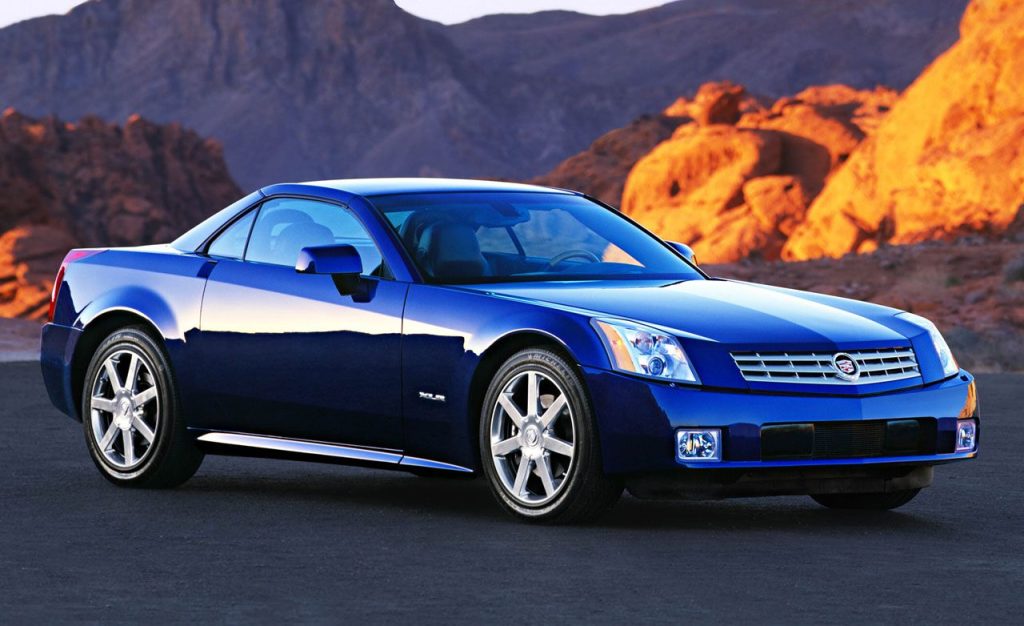
Also Read: 10 Best Daily Drivers for Harsh City Traffic With Best Fuel Efficiency
2004 Cadillac CTS-V
In the early 2000s, Cadillac’s push to attract a younger audience became increasingly evident. The first-generation Cadillac CTS-V was the earliest indication of this shift.
The luxury sedan was built on the all-new GM Sigma platform, which was exclusive to Cadillac’s rear-wheel-drive models. However, the most notable feature of the CTS-V was its performance-oriented engine options.
The early models were powered by the LS1-based LS6 V-8, while later versions used the LS2, both of which were derived from the C5 Z06 Corvette and the C6 Chevrolet Corvette, respectively.
These engines helped the CTS-V achieve impressive power figures, with 400 horsepower and 395 lb-ft of torque. The vehicle also boasted a 6-speed manual transmission and rear-wheel drive, allowing it to accelerate from 0 to 60 mph in just 4.6 seconds.
What’s even more remarkable is that the first-generation CTS-V was available only with a manual transmission, making it a standout in the luxury sedan market.
At the time, Cadillac offered a four-door luxury sedan that could match the performance of the iconic Corvette, which was a bold statement for the brand.
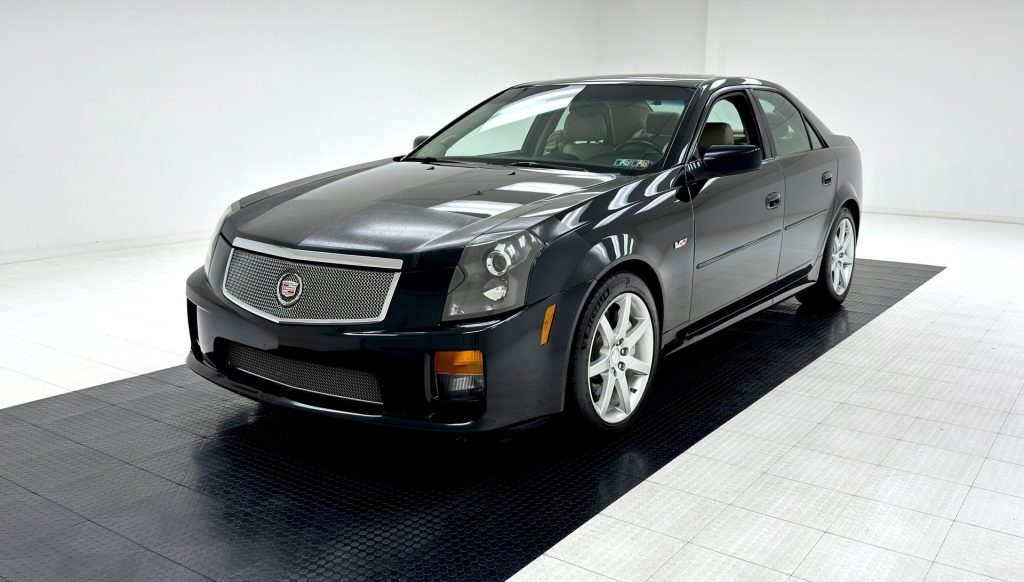
2016 Cadillac ATS-V
By 2016, GM took a significant step forward in improving the driving dynamics of its performance models with the introduction of the GM Alpha platform.
This platform was a game-changer, as it allowed GM’s performance models to rival their Japanese and European counterparts.
Cadillac’s ATS, along with the sixth-generation Chevrolet Camaro, was one of the first vehicles to benefit from this new platform, making it the most agile and athletic Cadillac at the time.
The 2016 Cadillac ATS-V featured a 3.6-liter twin-turbocharged V-6 engine, which produced 471 horsepower and 445 lb-ft of torque.
The ATS-V could accelerate from 0 to 60 mph in just 3.8 seconds. Rather than opting for the traditional V-8, Cadillac equipped the ATS-V with the LF4 twin-turbo V-6, marking a departure from the brand’s usual reliance on pushrod V-8 engines.
Coupled with a responsive chassis and a choice of excellent transmissions, the ATS-V offered performance on par with the current BMW M3, a notable achievement for a luxury sedan.
The ATS-V helped cement Cadillac’s position as a true competitor in the performance car arena, offering a blend of luxury and speed that rivaled the best in the industry.
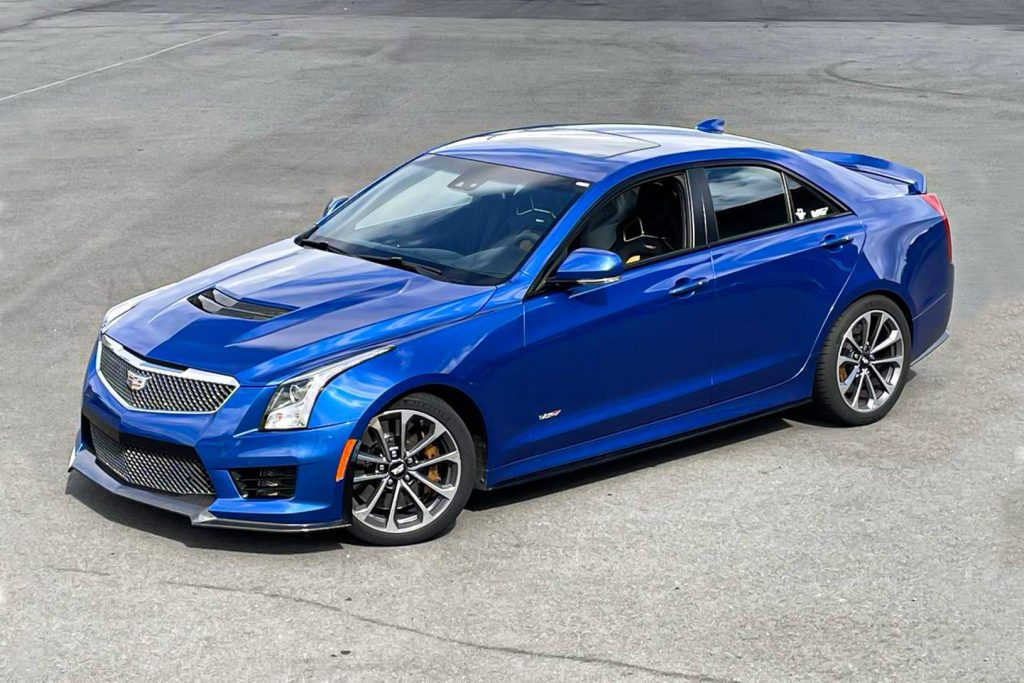
2011 Cadillac CTS-V Sport Wagon
The second-generation Cadillac CTS-V shared a significant amount of technology with the Corvette, including its engine, Brembo brakes, and transmission options.
The previous generation had already set a precedent by offering a manual transmission in Cadillac luxury sedans, and the second-generation CTS-V continued that tradition.
This model received an upgraded version of the Sigma platform, but more notably, it expanded Cadillac’s offerings by introducing its first-ever high-performance station wagon, alongside the sedan and coupe body styles.
Under the hood, the 2011 Cadillac CTS-V Sport Wagon was powered by a 6.2-liter supercharged OHV V-8 engine, producing 556 horsepower and 516 lb-ft of torque.
The car’s drivetrain consisted of rear-wheel drive (RWD), and it was available with both a 6-speed automatic and a 6-speed manual transmission. The CTS-V Sport Wagon was capable of accelerating from 0 to 60 mph in just 3.8 seconds, a remarkable feat for a station wagon.
The engine, known as the LSA V-8, was based on the Corvette C6 ZR-1’s LS9 unit and featured a supercharger.
The CTS-V Sport Wagon combined practicality with extreme performance, making it both a functional family car and a drag-strip monster. To this day, it remains one of the fastest GM cars ever produced.
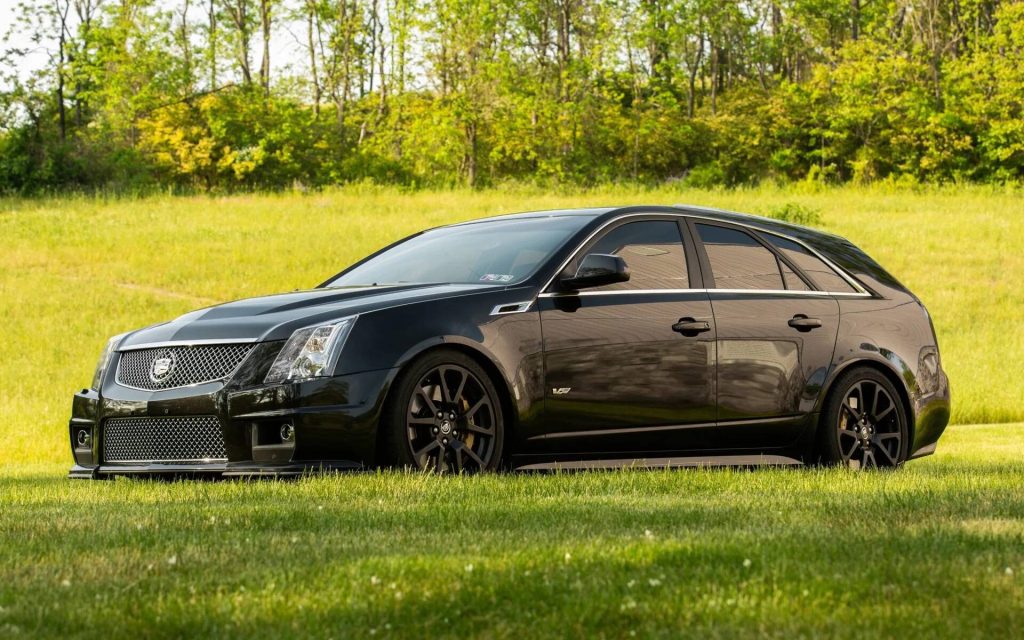
2022 Cadillac CT5-V BLACKWING
In 2022, Cadillac revealed the CT5-V BLACKWING, a luxury sports sedan that redefined what Cadillac could achieve.
Though Cadillac has always been associated with luxury, the CT5-V BLACKWING pushed the envelope by offering a supercharged, pushrod V-8 engine alongside a manual transmission, a feature not commonly seen in modern luxury sedans.
This model competes head-to-head with the BMW M5 and utilizes the GM Alpha II platform, providing performance that challenges more established competitors.
The CT5-V BLACKWING is powered by a 6.2-liter supercharged OHV V-8 engine, which produces an impressive 668 horsepower and 659 lb-ft of torque.
The car comes with either a 10-speed automatic transmission, jointly developed by Ford Motor and General Motors, or a 6-speed manual transmission. The car can accelerate from 0 to 60 mph in just 3.6-3.4 seconds, solidifying its place as one of the fastest sedans on the market.
Like its predecessor, the Cadillac CT5-V BLACKWING shares its powertrain with the Chevrolet Corvette, this time using the C7 Z06’s engine. With a top speed of 209 mph (336 km/h), the CT5-V BLACKWING holds the title of the fastest sedan in Cadillac’s history.

Additionally, it is widely regarded as the most analog luxury sports sedan available, providing an engaging driving experience while still offering the luxury and refinement Cadillac is known for.

